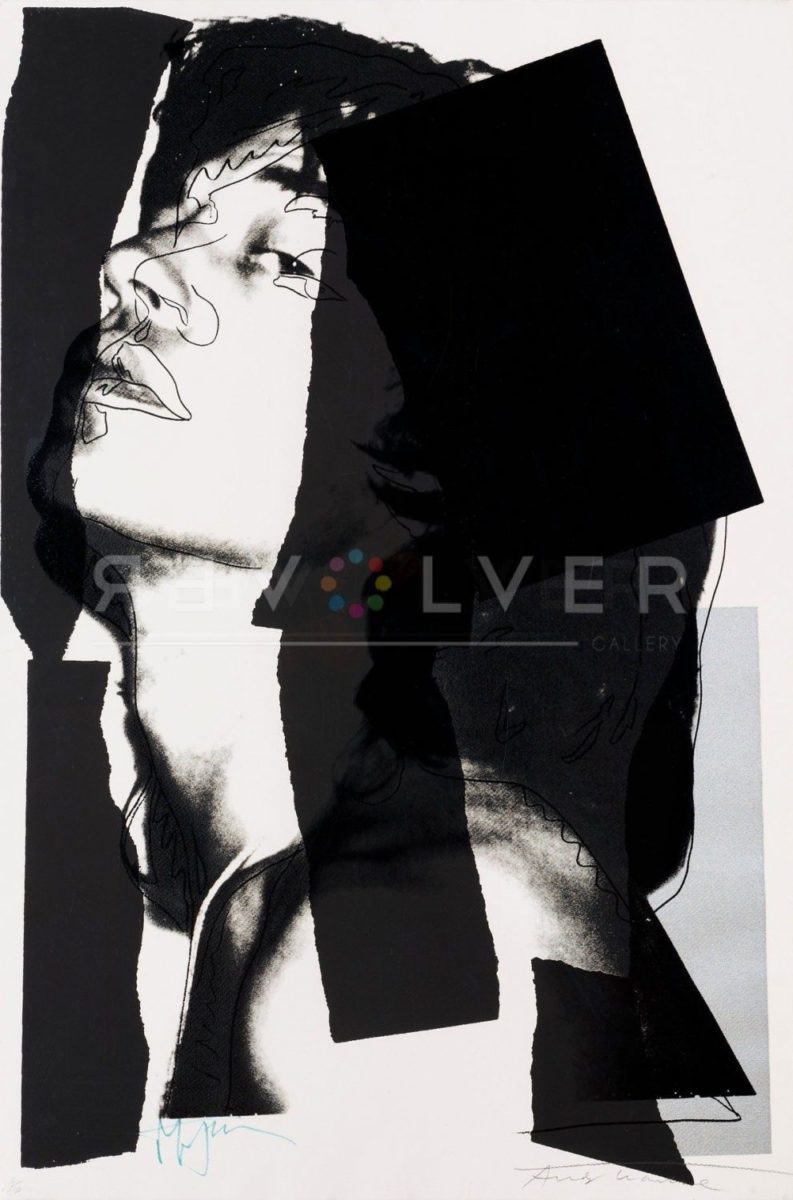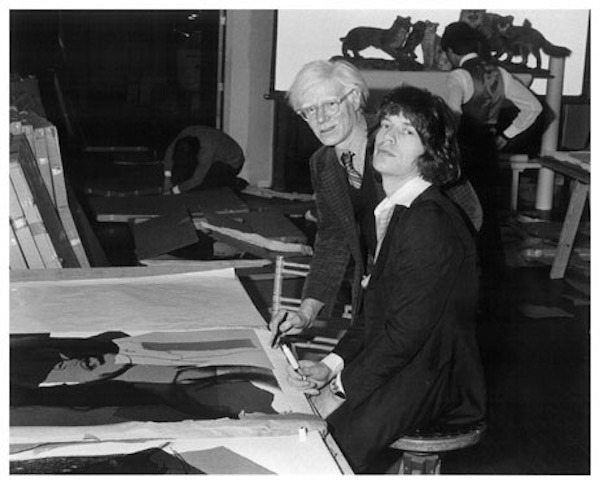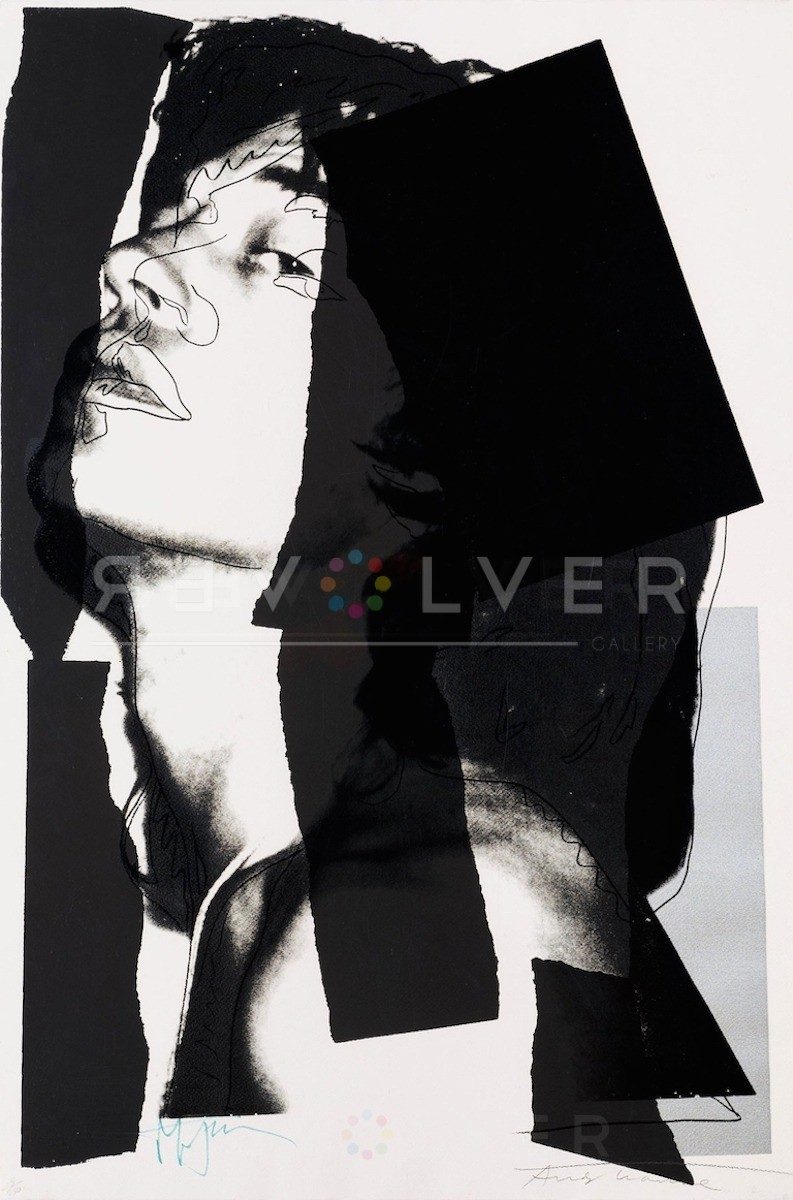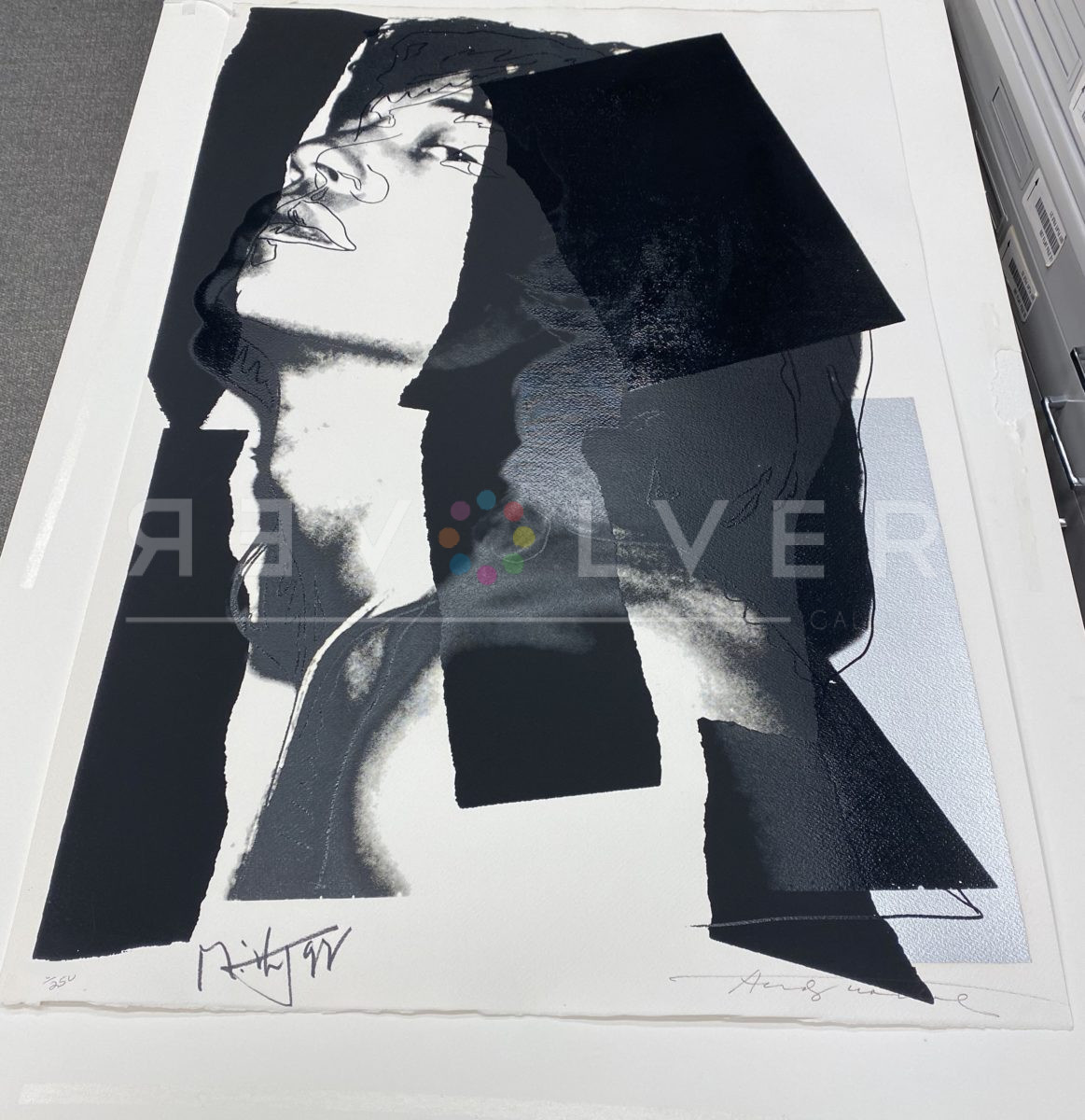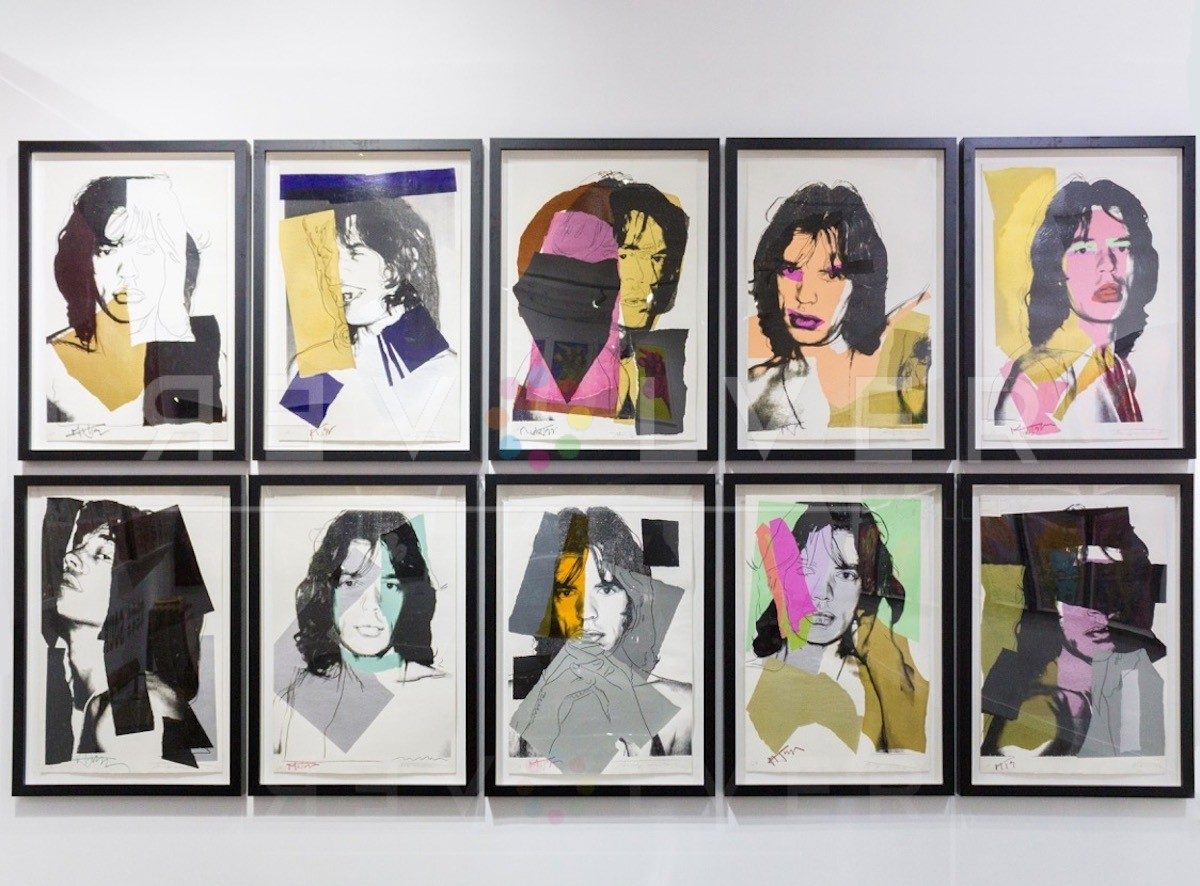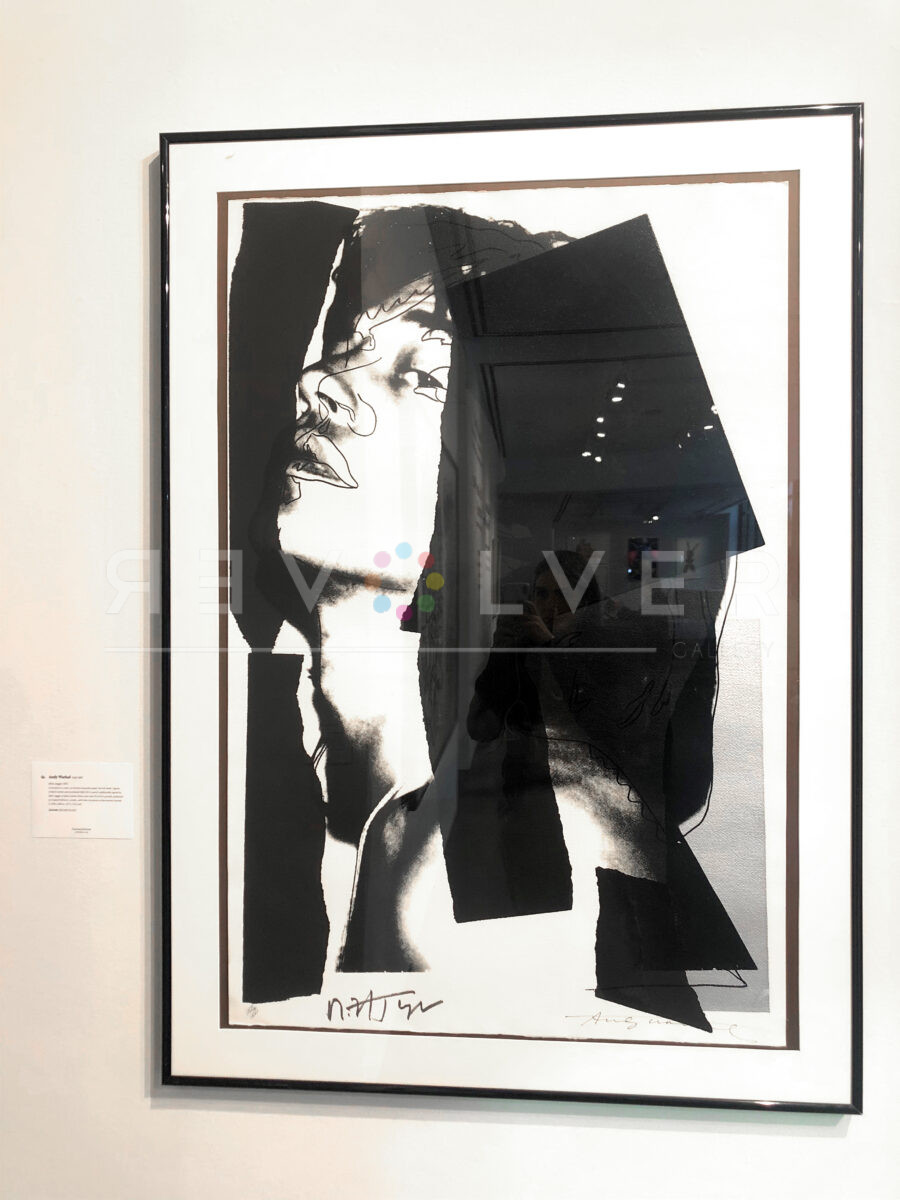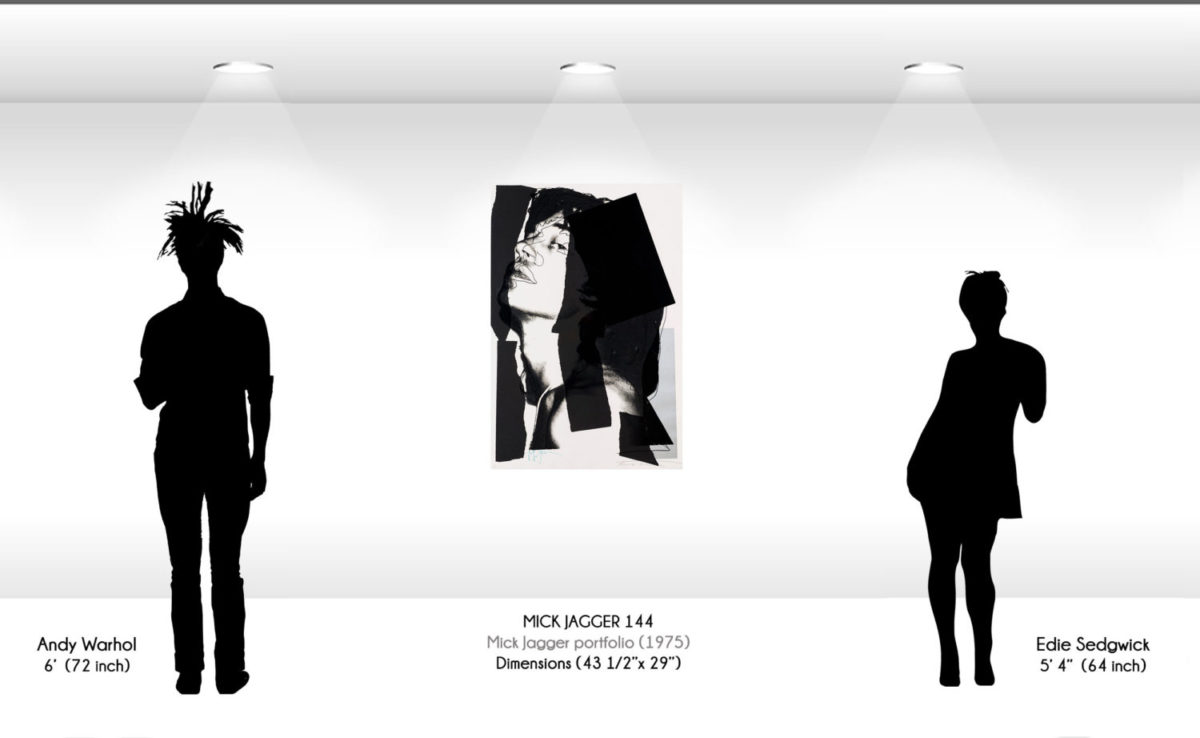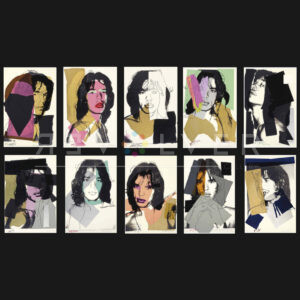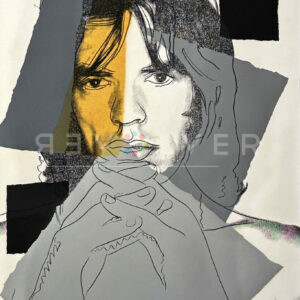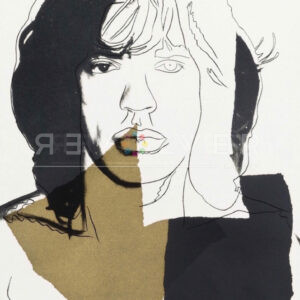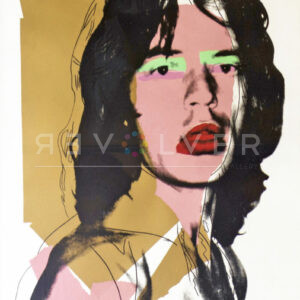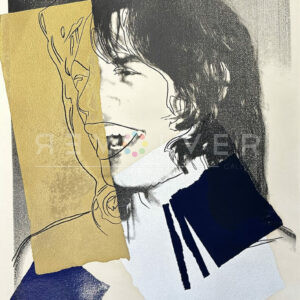Mick Jagger 144 is a screenprint by Andy Warhol from the artist’s iconic Mick Jagger series (1975). It is one of ten portfolio pieces dedicated to the famous rock star. Warhol’s choice to merge screen prints with bold blocks of color and line drawings was characteristic of his mixed media style. This approach also gave him the chance to draw focus to specific aspects of Jagger’s colorful personality. Warhol used the opportunity to examine the magnetism of celebrity, a concept that fascinated him throughout his career. Both Warhol and Jagger signed the prints in this collection, doubling its stardom. Additionally, the complete Mick Jagger series ranks amongst Warhol’s top 10 most valuable portfolios ever sold.
“Mick Jagger is the rock star with the longest running image,” Warhol asserted. “He’s the one all the young white kids copy. That’s why every detail of his appearance is important.” One of the ideas that interested Warhol most was repetition. It makes perfect sense that he would pay close attention to what icons young people wanted to imitate. Mick Jagger had become a part of America’s consciousness, and Warhol wanted to study what made Jagger tick. What was it that made him so enthralling?
Though they met in the 1960’s, Warhol and Jagger developed a strong bond in the early 1970’s when they collaborated on the Rolling Stones’ album cover for Sticky Fingers. Both artists shared a knack for mixing a rebellious attitude with good business sense. With its strong black and white contrast and sexual imagery, the infamous cover bore a strong resemblance to Warhol’s later work, Mick Jagger 144. In 1975, the two came together again at Warhol’s Montauk home while Jagger rehearsed with the Stones. Here, Warhol shot the Polaroid photos that would become a full portfolio. Through these ten screen prints, he completed an examination of Jagger’s layered personality and took a magnifying glass to his every expression.
Compared to the rest of this portfolio, Mick Jagger 144 stands out with its high contrast monochromatic color scheme. It is no mistake that this is the boldest portrait in the group. A curtain of black partially veils Jagger, throwing his full identity into obscurity. The viewer instead centers on his bare shoulders, the arch of his neck and his wry side-eye glance. It is the most sexually suggestive image in Warhol’s Mick Jagger series, and the most curious. The colors convey a darker side to Jagger’s celebrity, whereas the contrast suggests that his true identity is concealed from his audience. Instead the public sees the image Jagger wants to expose, that of the rock and roll bad boy.
Mick Jagger’s famous look paired with his gyrations onstage made him a rock legend as well as a sex symbol. In his series Warhol was able to present all the complexities of his persona and thus explore what made him so monumental to American pop culture.

